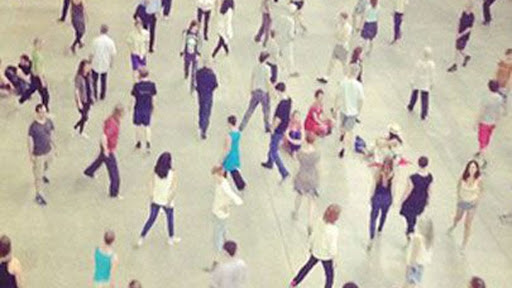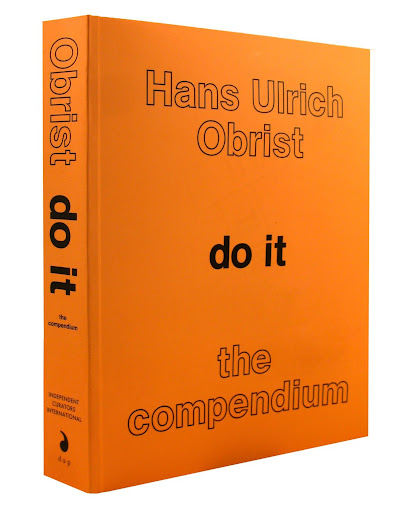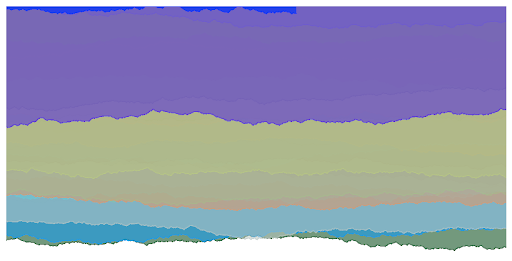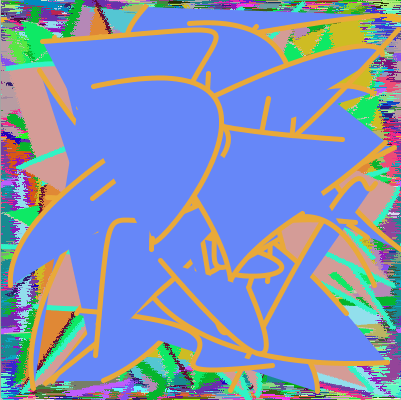Some thoughts on generative art...
A method by which a routine / algorithm / program / process / rules / code and such defined instruction sets can iteratively generate unique aesthetic arrangements. Artists employ generative art modalities to create unique iterative works of art. SolLeWitt's rule based drawings, Tino Sehgal's instructional performances and Hans Ulrich Obrist's "Do It'' collaborative artist instructions etc are some instances where the artists have employed generative art modalities, using a simple set of rules or instructions which when followed manifest fresh new works, each different from the other previous invocations. A natural delta emerges because each person interprets these rules differently and adds his/her sensibilities to the work, in effect creating a unique combination each time.

Image: Instructional wall drawing by Sol Lewitt sourced from google.com
In the interest of seeing this from the perspective of generative art, we may call these 'algorithms'
that are performed by human agencies, in a way that other people follow some instruction set for the work to be made. In the domain of technology, these algorithms are performed by machines. The uniqueness of each iteration is overlaid using a random or mathematical choice of certain variables which might define colour and form. And each layering of these generated images in effect creates a unique visual, and the algorithm is capable of endlessly generating unique instances of itself.


Image 1: An instruction based performative work by Tino Sehgal, Image 2: "Do it" book of instructions based artwork by Hans Ulrich Obrist
How can generative art using programming help us in understanding aesthetics? What are the limits of this process? How can painting be developed further using this approach?
Often times the endeavour of painting encapsulates the desire to explore the various permutations and combinations of form and colour, more so in the realm of abstract expressionist paintings where the entire canvas becomes a playground of sorts, where anything is possible. But even in a purely abstract pursuit, one must take some aesthetic decisions that become the definitive goals of the underlying search.

Image: An instance of Endless Landscapes
There are various points of enquiry that drive the creation of works, where a certain time an algorithm is explored that is only concerned with study of pure colour variations and rendering, but may completely ignore any effort to forcefully create a form, so that forms can naturally emerge out of the natural order of rendered space. The algorithmic goal is then to ingeniously craft a way to maximize the unique iterativeness of generating an expanded set of permutations and combinations possible in the available colour space. Another aesthetic arrangement just as might just as well be written to create endless forms of various dimensions, edges and connections where these forms are overlapped to create more complex higher order forms and patterns.
Needless to say that these generative variations are interesting for the artists to witness as it informs their work deeply where many times an artwork is created solely for the purpose of seeing what's possible.
Visual arrangements based on a randomised or artificailly intelligent choice of variables with brute force of the machine provide this infinite generative possibilities, where as an artists might prune the available choices to suit one's own aesthetic and effort considerations. Generative algorithms in this vein become a toolkit to further expore the scope of aesthetic possibilities, as an ally for long walks in the field of drawing and painting.

Image: An instance of Animotion
The works on this site are some of the ideas and concepts I have been exploring since 2009, mostly using it as a tool to study the possibilities of painting using code. My research interest is in visual heuristics to determine simple learnings from the vastness and sometimes obscure reaches of visual language and be able to understand ourselves better through our drawings. I regard that in my understanding and approach, heuristics play an important role as they allow a fast turnaround time, between the envisioning of the aesthetic for generative research and then writing of the algorithm to explore the concepts in simple heuristic rules that can create emergent complexity and depth through iterations.